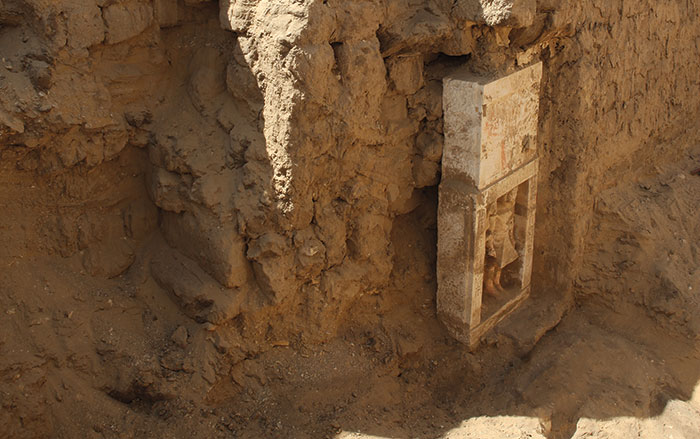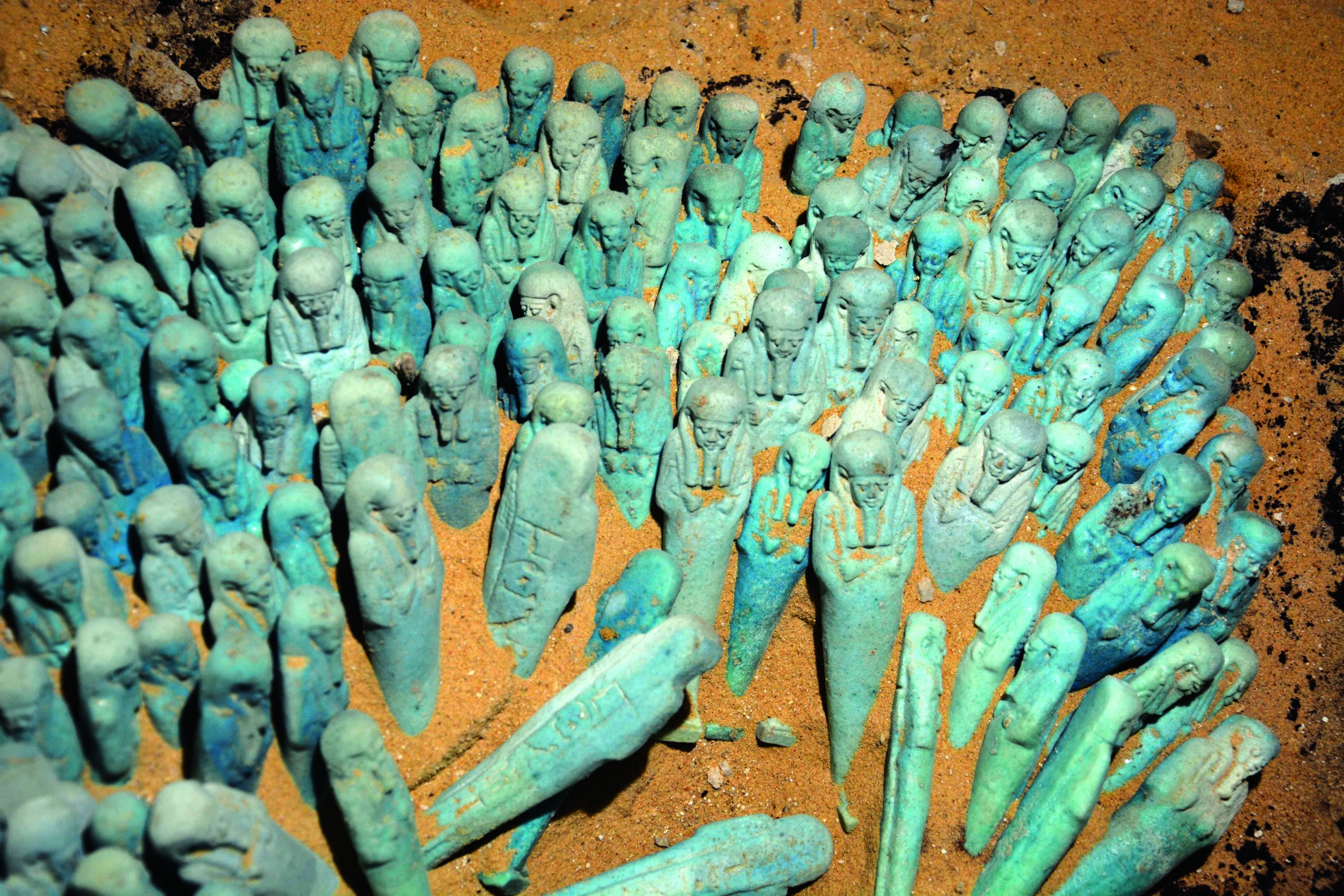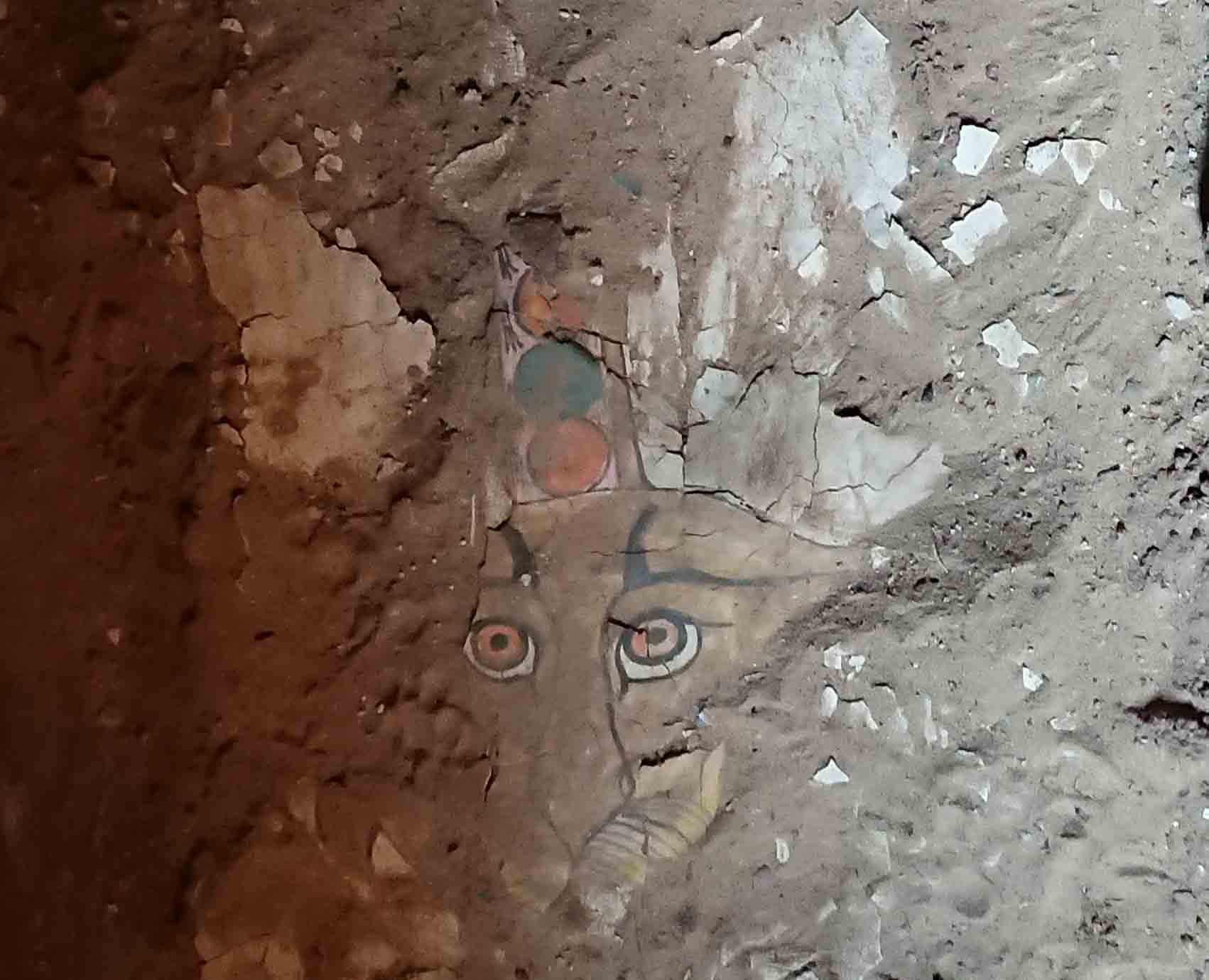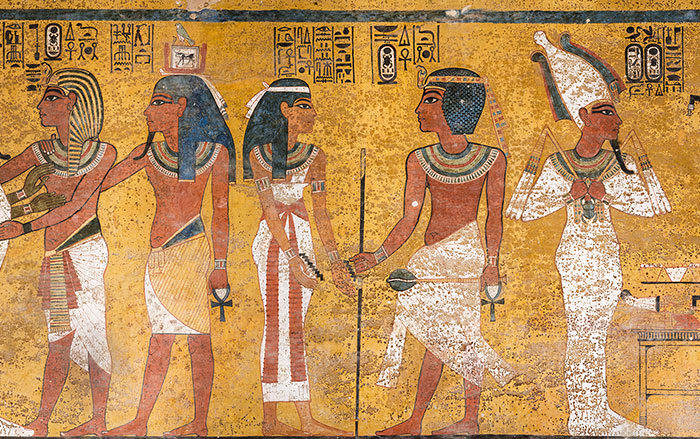WARSAW, POLAND—According to a Science in Poland report, archaeologists led by Kamil O. Kuraszkiewicz of the University of Warsaw uncovered dozens of poorly preserved 2,000-year-old mummies in the area of the so-called “Dry Moat,” which surrounds Saqqara’s Pyramid of Djoser. Kuraszkiewicz said the mummies had received basic embalming treatments and were placed in wooden coffins before they were buried in pits in the sand. Painted images that survived on one coffin, which was damaged in antiquity, show a multicolored necklace and an imitation of a hieroglyphic inscription. “Apparently, the artisan who painted it could not read,” Kuraszkiewicz said, “and perhaps he tried to re-create something that he had seen before. In any case, some of the painted shapes are not hieroglyphic signs, and the whole does not form a coherent text.” Two blue images of Anubis, an Egyptian god associated with mummification and the afterlife, adorn the feet of the coffin, he added. Anubis, however, is usually depicted in black. Kuraszkiewicz suggests the blue coloring of the painting may reference the ancient Egyptian belief that the hair of the divine jackal was made of precious blue stone. To read about another recent discovery at Saqqara, go to “Mummy Workshop.”
Mummies Unearthed Near Saqqara’s Pyramid of Djoser
News July 2, 2019
Recommended Articles
Digs & Discoveries May/June 2022
Together Forever


Digs & Discoveries May/June 2020
Guardian Feline

Digs & Discoveries July/August 2025
Miners' Misfortune

-
Features May/June 2019
Bringing Back Moche Badminton
How reviving an ancient ritual game gave an archaeologist new insight into the lives of ancient Peruvians
 (Courtesy Christopher Donnan, Illustration by Donna McClelland)
(Courtesy Christopher Donnan, Illustration by Donna McClelland) -
Features May/June 2019
Inside King Tut’s Tomb
A decade of research offers a new look at the burial of Egypt’s most famous pharaoh
 (Courtesy Factum Arte)
(Courtesy Factum Arte) -
Letter from the Dead Sea May/June 2019
Life in a Busy Oasis
Natural resources from land and sea sustained a thriving Jewish community for more than a millennium
 (Duby Tal/Albatross/Alamy Stock Photo)
(Duby Tal/Albatross/Alamy Stock Photo) -
Artifacts May/June 2019
Ancestral Pueblo Tattoo Needle
 (Robert Hubner/Washington State University)
(Robert Hubner/Washington State University)



